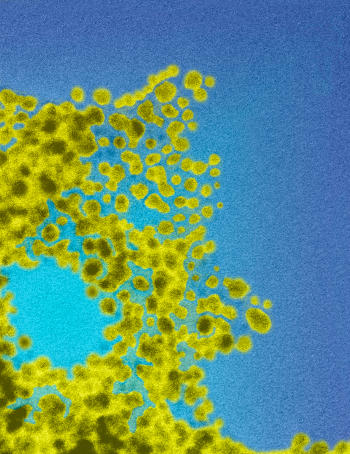Using AI to control energy for indoor agriculture
30 September 2024
Published online 30 October 2016
These new nano-carriers promise more efficient and less toxic delivery to healthy cells.

© Greenshoots Communications / Alamy Stock Photo
Many drugs, especially those used for treating cancer, infectious diseases, and neurological diseases, lack specificity and often have an adverse effect on healthy tissues, causing numerous side-effects. For decades, scientists have been developing drug delivery systems to control both the rate and location of drug release. Such systems hold promise to limit side effects, and to substantially improve drug efficiency.
But, developing a potent system to accurately deliver a drug to an intended target site remains a challenge. “The design of suitable polymeric materials is an increasingly important research area; due to the constant demands for applications in medicine as drug delivery systems,” says Sherine Khattab, corresponding author of the new study, and professor of peptide chemistry at Alexandria University in Egypt.
Khattab and her colleagues developed a set of polymeric organic compounds containing nitrogen, with a well-defined structure and high performance as drug nano-vehicles.
When loaded with celecoxib, an anti-inflammatory drug with an anti-cancer effect, the newly synthesized polymers ‘entrapped’ a larger percentage of the drug within its nanoparticles.
Most cancer drugs, including celecoxib, are poorly soluble and therefore need solvents to enhance their bioavailability -– in other words, the solvents help make the drug available at the desired action site. Generally, solvents used are highly toxic. The new loaded polymers however helped omit toxic solvents during drug administration.
For a drug delivery system to achieve localized targeting and controlled release, long-term circulation in blood is crucial. Typically, a smaller particle will be removed at a much slower rate from the circulation. The synthetic polymers, the authors reported, were found to have a notably small size. The polymers also showed considerable thermal stability and a feasible potential to accumulate in tumor tissues.
These features make for a promising drug nanodelivery system.
“It is interesting preliminary work showing a proof-of-concept in test tubes, but it is too early to get a clear idea of the potential of these materials, specifically for drug delivery applications,” says Nicolas Bertrand, an assistant professor at Laval University in Canada, who is not involved in this paper. “Further work will be needed to assess whether these results are portable to other drugs in need of drug delivery systems.”
doi:10.1038/nmiddleeast.2016.196
Stay connected: